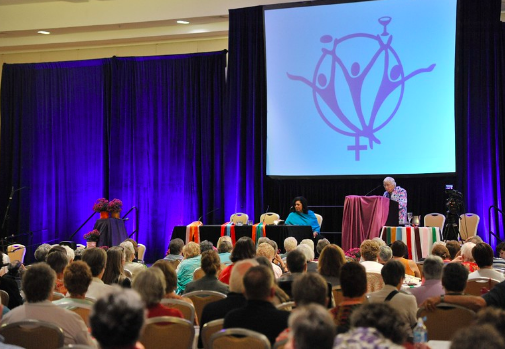Lay Ecclesial Movements and Church Reform

Publicity surrounding the Synod on Youth and Vocational Discernment this past October highlighted the very slight role that laity have in decision-making in the Church and the growing awareness that change is sorely needed. As part of the reaction, Massimo Faggioli, professor of theology and religious studies at Villanova University, wrote an article in Commonweal discussing the challenge of representing the laity in the official “church”.
Faggioli is an expert on the subject of lay ecclesial movements, having written a book on the “new” ecclesial movements (Sorting Out Catholicism) which I have not read. His professional knowledge of the culture of these entities makes it all the more interesting that he finds their ranks inadequate to represent the laity – and, in fact, comments that they may contain individuals more authoritarian and invested in clerical culture than bishops and cardinals. “…there is little point in replacing the old clericalism of the ordained with anew clericalism of lay men and women who have proven themselves as extra Catholic only by belonging to some favored group within the church,” he concludes.
So, who should be tapped as representatives of the laity if we should ever have the opportunity to send such to an official Vatican convening? And how would we, the baptized, go about a self-selection process that would be fair and universally acceptable? The mind boggles at the complications and issues that would arise!
I cannot but think, though (and hope!) that those of us who have been invested in church reform for many years should have a place at the table. Active members of organizations like Women’s Ordination Conference and other groups have been studying the structures of the Church for many decades and working behind the scenes to educate and inspire involvement not just in their own groups but in the church itself. Members of these reform organizations know more than the “average” Catholic about church finances, policies, doctrine, and issues. Calls for gender equality, financial transparency, clergy accountability, fair labor practices, practical division of pastoral duties, relevant ritual and many other issues have originated with the dedicated organizations lumped into the category of “catholic reform organizations.” On a local level, it is often the people who belong to these national reform groups who are particularly active in parish affairs, attempting to apply their passion for improvements in the church to their beloved parishes.

Yet, despite longevity and widespread membership, no reform group is considered under the label “lay ecclesial movement”. Personally, since 2002, I have been devoting large quantities of time, money and energy to working fora better church – but not in Focolare or Marriage Encounter, or any of the other “official” lay movements. My dedication to reform has supplemented the ecclesial knowledge I acquired while studying for a Masters in Theology with additional theoretical expertise. Passion for change has inspired me to read widely not only in visionary tracts of prophets and idealists, but also in nitty gritty church documents, canon law, and traditional theology. My twenty-five years plus of experience as a parish Director of Religious Education and Campus Minister has been amplified by hands-on grassroots interaction. And I am certainly not alone in either the education or proficiency that flourishes in my colleagues in all the different reform groups.
As we seem to inch quietly forward towards a day when there may truly be some kind of “lay” representation at an official church synod or other gathering, let’s hope and pray that the means for choosing members of the baptized to “represent” will be wide enough and open enough to embrace the universality and diversity within the Catholic Church. I claim reform organizations as “lay ecclesial movements” of serious intent worthy of recognition, despite not being a “favored group within the Church.”

One Response
The hierarchy/laity relation is a mirror of the man/woman relation. For this reason, the ordination of women is key to make further progress along the path from Genesis 3:16 to Galatians 3:28. It is a journey that has been made possible by the redemption, but we have a long way to go. Current initiatives about “synodality” by Pope Francis point in this direction. No matter how things work out, the “apostolic” mark of the church is not negotiable.